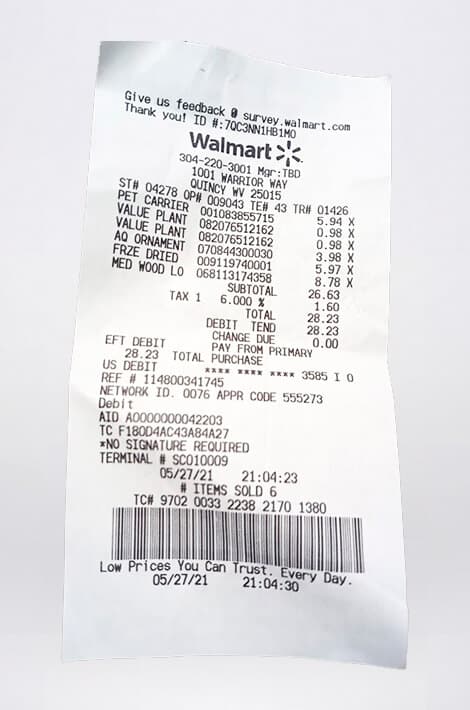Last Updated on June 28, 2025
At the heart of Tabscanner’s high-performance receipt OCR processing and image classification lies a robust and scalable convolutional neural network (CNN) pipeline. This OCR pipeline leverages the transformative power of TensorFlow and Keras, enabling accurate and efficient data extraction from receipt images.
In this blog post, we explore the origins and evolution of Keras, its integration into TensorFlow, and how this combination empowers Tabscanner’s data scientists to build innovative solutions while staying laser-focused on customer needs.
The Origins of Keras: A Visionary’s Contribution
Keras was created in 2015 by François Chollet, a researcher and software engineer at Google. Its mission was clear: to make deep learning accessible to a broader audience by providing an intuitive, high-level API for building and training neural networks.
Unlike earlier machine learning frameworks that required extensive boilerplate code and deep technical knowledge, Keras offered simplicity without sacrificing power. It became the go-to tool for researchers and developers, thanks to its:
- User-Friendly API: Designed for humans, not machines, making machine learning development faster and more intuitive.
- Modular Design: Built around modular building blocks, allowing for easy experimentation and customization.
- Backend Agnosticism: Initially, Keras supported multiple backends, including TensorFlow, Theano, and CNTK, giving developers flexibility in choosing their computational engine.
Keras Meets TensorFlow: A Game-Changing Integration
In 2017, Google announced that Keras would be incorporated directly into TensorFlow 2.0, solidifying its position as a central component of the TensorFlow ecosystem. This integration brought several benefits:
- Seamless Workflow: Combining TensorFlow’s computational power with Keras’ high-level API streamlined the development process.
- Unified Ecosystem: TensorFlow became a one-stop shop for both high-level model building (via Keras) and low-level customization.
- Improved Performance: TensorFlow optimized Keras operations for GPU/TPU acceleration, significantly boosting training speeds.
- Wider Adoption: As TensorFlow gained traction in industry and academia, so did Keras, further enriching its community and resources.
François Chollet continued to lead the development of Keras, emphasizing its core values of simplicity and usability. His vision of “democratizing AI” resonated with the broader community, shaping Keras into a tool that empowers researchers and businesses alike.
Keras and TensorFlow in Tabscanner’s CNN OCR Pipeline
For Tabscanner, Keras and TensorFlow form the backbone of its CNN-based pipeline, driving receipt OCR processing and image classification tasks. Here’s how these tools enable Tabscanner to deliver unparalleled accuracy and efficiency:
1. Rapid Model Prototyping
Keras allows Tabscanner’s data scientists to experiment with different architectures, from simple feedforward networks to advanced convolutional and recurrent models.
With just a few lines of code, a CNN for OCR can be defined:
from tensorflow.keras.models import Sequential
from tensorflow.keras.layers import Conv2D, MaxPooling2D, Flatten, Dense
model = Sequential([
Conv2D(32, (3, 3), activation='relu', input_shape=(128, 128, 1)),
MaxPooling2D((2, 2)),
Flatten(),
Dense(128, activation='relu'),
Dense(10, activation='softmax')
])
This simplicity enables the team to focus on optimizing performance and accuracy rather than worrying about implementation complexity.
2. End-to-End OCR Pipeline Support
TensorFlow’s integration with Keras provides end-to-end support, from data preprocessing to deployment. For example:
- Preprocessing: Tabscanner uses TensorFlow to resize, augment, and normalize receipt images for training.
- Training: Keras’ built-in training loops (
fit()andevaluate()) simplify the process of iterating through epochs and optimizing models. - Deployment: Models trained in TensorFlow can be exported and deployed seamlessly to production environments, ensuring real-time inference capabilities.
3. Scalability with TensorFlow
Tabscanner processes millions of receipts daily. TensorFlow’s distributed training capabilities allow the team to train large models across multiple GPUs or TPUs, reducing training times and accelerating development cycles.
4. Explainability and Debugging
Keras integrates well with tools like TensorBoard, enabling Tabscanner’s data scientists to visualize training metrics, debug issues, and fine-tune models. This transparency ensures models are interpretable and performant.
How Keras Accelerates Machine Learning Development
By abstracting the complexities of deep learning, Keras allows Tabscanner’s data scientists to focus on what truly matters: solving customer problems. Here are some key benefits:
- Time Efficiency
- Complex architectures can be implemented in hours rather than days, speeding up innovation.
- Collaboration
- Keras’ intuitive API makes it easy for engineers, researchers, and even non-experts to collaborate on machine learning projects.
- Access to State-of-the-Art Models
- Keras provides pre-trained models through the
keras.applicationsmodule, allowing Tabscanner to leverage advanced architectures like ResNet, EfficientNet, and Transformer-based models for OCR tasks.
- Keras provides pre-trained models through the
- Focus on Customers
- With Keras handling the technical overhead, Tabscanner’s team can dedicate more time to understanding customer needs and improving user experiences.
TensorFlow and Keras: The Future of Machine Learning at Tabscanner
As Tabscanner continues to scale its operations and enhance its OCR capabilities, TensorFlow and Keras will remain at the core of its machine learning stack. The combination of Keras’ usability and TensorFlow’s scalability ensures that the team can innovate rapidly while maintaining robust production systems.
Conclusion
Keras and TensorFlow are not just tools—they are enablers of innovation. For Tabscanner, these technologies drive the complex CNN pipelines that power receipt OCR processing and image classification. By simplifying model development and accelerating workflows, Keras allows Tabscanner’s data scientists to focus on what matters most: delivering exceptional value to customers.
As François Chollet envisioned, Keras truly democratizes AI, making it accessible, powerful, and impactful for businesses like Tabscanner and beyond. 🚀
Want to learn more?
Visit the Keras website or explore TensorFlow’s documentation for tutorials, examples, and resources.





![Receipt OCR Using c-sharp [C# A Complete Guide 2025]](https://tabscanner.com/wp-content/uploads/2025/01/csharp-700x300.jpg)